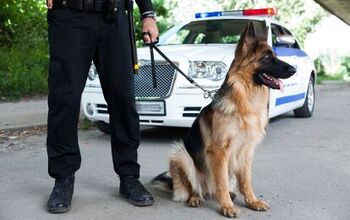New Study Shows Dogs Can Tell the Difference Between Human Languages

After thousands of years spent as companions of humans, dogs have gotten pretty good at reading our body language, intonation, words, and emotions, so finding out that they can actually tell the difference between languages shouldn’t come as a huge surprise. A new study done by researchers at the Department of Ethology at Eötvös Loránd University in Hungary revealed that canines have the ability to differ real language from scrambled nonsense, and what’s more – to make the distinction between human languages, or, in this case, Hungarian and Spanish.
Of course, it’s only logical that a pet parent had the idea to do this kind of research: Laura V. Cuaya, the first listed author of the study, moved from Mexico to Hungary with her four-legged bestie, Kun-Kun. She was curious to know if her pet, after living in a country where he was exposed only to Spanish, could tell that people in his new country of residence spoke a different language. Drawing on the fact that humans, even in infancy, can notice that difference, Cuaya conducted a study that involved 18 dogs, including Kun-Kun – two of the dogs understood Spanish and the rest Hungarian. The dogs were trained to lie still in a brain scanner and were then played audio excerpts from the book “Little Prince”, in Spanish, in Hungarian, and in scrambled non-speech. This allowed researchers to determine if dogs distinguish speech and non-speech, as well as make sure that the dogs were hearing the same words in different languages for easier comparison.
The results were impressive: the study enabled researchers to identify a hierarchy processing in the dog’s brain to process speech and locate distinct cerebral regions in canine brains. Or, in other words – dogs are perfectly able to make the difference between real language and nonsensical scramble, same as humans, and, what’s more: when they determine it is actually a language that’s being spoken, they can tell if it’s a different one to the language they recognize. Another interesting thing that researchers noticed is that the older the dogs were, the easier it was for them to make the distinction between the new language and the one they are already familiar with.
The results of the studies led to hypotheses about the role of domestication and human-and-dog bond in the process of canine understanding of human languages and some of their intricacies. The idea is that the fact that dogs have been our best friends for thousands of years might have equipped them with an innate ability to understand us better – on so many levels. Many exciting studies about canines could stem from these findings and dog lovers are here for it.

A proud mama to seven dogs and ten cats, Angela spends her days writing for her fellow pet parents and pampering her furballs, all of whom are rescues. When she's not gushing over her adorable cats or playing with her dogs, she can be found curled up with a good fantasy book.
More by Angela Vuckovic























